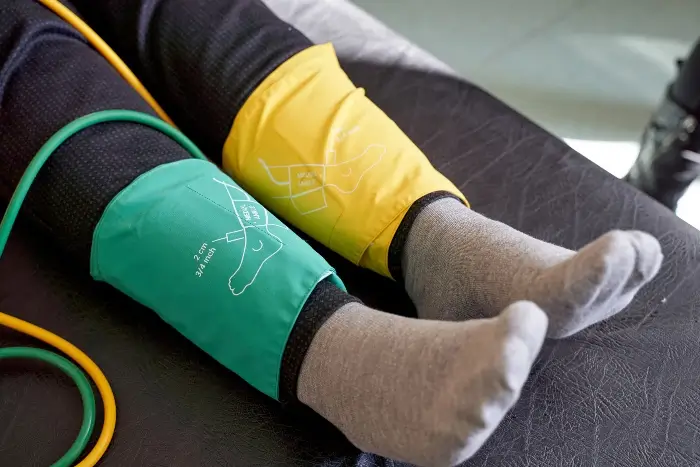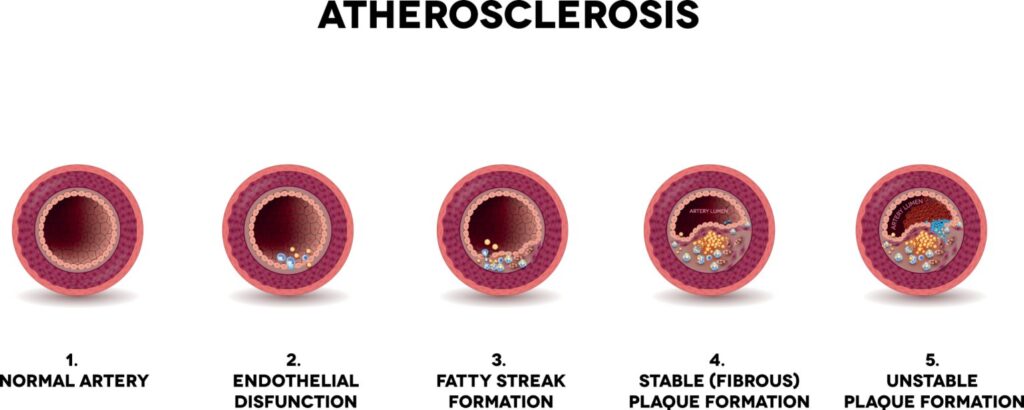What is Peripheral Artery Disease?

Peripheral artery disease (PAD) affects millions of people worldwide and is often underdiagnosed. It occurs when the arteries that supply blood to your limbs, particularly your legs, become more narrowed or blocked due to a buildup of fatty deposits, known as plaques. This may reduce blood flow and can lead to various symptoms, including leg pain during physical activity, numbness, and even sores that do not heal properly. At ReVaMP Heart & Vascular Institute, we want our clients to feel well-educated. Let’s delve deeper into understanding PAD, exploring its causes and risk factors, the range of symptoms you might experience, and the various treatments available. Patients may need to implement lifestyle changes, start new medications, or require more advanced interventions. You can take proactive steps to manage your health effectively by better understanding this condition.
Understanding PAD
PAD is a common circulatory issue. It occurs when fatty deposits, or plaques, build up in the arterial walls. This buildup, known as atherosclerosis, restricts blood flow to your limbs.

Explore some key points our team thinks you should know about PAD:
- It affects the arteries which supply blood to your limbs.
- It is generally caused by atherosclerosis, which narrows or blocks the arteries.
- Reduces blood flow, leading to various symptoms and complications.
Exploring the Symptoms of PAD
Identifying the symptoms of PAD early can help prevent serious complications. If you experience any of these symptoms, it is crucial to consult with a healthcare provider. Learn about some common PAD symptoms to look for:
- Leg Pain: Cramping or pain in your legs, especially when walking or exercising.
- Numbness: Numbness or weakness in your legs.
- Coldness in Lower Legs or Feet: A significant difference in temperature between your feet or legs.
- Sores or Wounds: Slow-healing sores or wounds on your feet or legs.
- Hair Loss: Reduced hair growth on your legs or feet.
- Shiny Skin: Skin on your legs or feet appears shiny and thin.
- Weak Pulse: Weak or absent pulses in your legs or feet.
Looking at Causes and Risk Factors for PAD
Several factors contribute to the development of PAD. Understanding these can help you take the correct preventive measures for your situation. Discover the major cause of PAD and other risk factors to look for:
Major Causes:
- Atherosclerosis: The primary cause of PAD, where plaque builds up in the arteries.
- Inflammation: This is found in the arteries, which can lead to narrowing.
Risk Factors:
- Smoking: Increases your risk of atherosclerosis.
- Diabetes: Significantly raises your risk of PAD.
- Obesity: Excess weight can contribute to atherosclerosis.
- High Blood Pressure: Damages your arteries over time.
- High Cholesterol: This leads to plaque buildup in your arteries.
- Age: The risk increases as you get older.
- Family History: A history of heart disease or PAD can increase your risk.
Diagnosing PAD
Early diagnosis is essential for effective treatment. Healthcare providers use various methods to diagnose PAD. Learn more about the different diagnostic methods you might see:
- Physical Examination: Checking for weak pulses or other signs.
- Ankle-Brachial Index (ABI): Comparing the blood pressure in your ankle to your arm.
- Ultrasound: Using sound waves to visualize blood flow in your arteries.
- Angiography: Injecting contrast dye into your bloodstream to view arteries on X-ray.
- Blood Tests: Checking for high cholesterol or diabetes.
Choosing Treatments for PAD
Several treatments are available to manage Peripheral Artery Disease (PAD) and significantly improve your quality of life. Working closely with a healthcare provider can assist in tailoring a treatment plan that best suits your needs and helps you regain mobility and vitality. Learn more about the different treatments for PAD:
Lifestyle Changes:
- Quit Smoking: Reduces the progression of PAD.
- Healthy Diet: Lowers cholesterol and blood pressure.
- Regular Exercise: Improves circulation and reduces symptoms.
- Weight Management: Helps prevent atherosclerosis.
Medications:
- Cholesterol-Lowering Drugs: Statins can reduce plaque buildup.
- Blood Pressure Medications: Help control high blood pressure.
- Blood Thinners: Prevent blood clots and improve blood flow.
- Medications for Symptoms: Such as cilostazol to reduce leg pain.
Surgical and Non-Surgical Procedures:
- Angioplasty: Inserting a balloon to open blockages in the artery.
- Stent Placement: Inserting a tube to keep the artery open.
- Bypass Surgery: This type of procedure creates a new pathway for blood flow.
- Thrombolytic Therapy: Dissolving blood clots with medication.
Living with PAD
Managing PAD requires ongoing care and lifestyle adjustments. Our team can provide assistance and tips to help you adjust to the lifestyle changes. Here are some tips to help you live with PAD:
- Follow Your Treatment Plan: Adhere to medication and lifestyle recommendations.
- Monitor Symptoms: Keep track of your symptoms and report changes to your healthcare provider.
- Stay Active: Engage in regular physical activity that meets your ability.
- Healthy Eating: Maintain a balanced diet with fruits, vegetables, and whole grains.
- Regular Check-Ups: Schedule routine visits with your healthcare provider.
Take Action Today With ReVaMP Heart & Vascular Institute
PAD is a serious condition, but with proper management, you can lead a healthy life. If you suspect you have PAD or are experiencing any symptoms, don’t wait. Schedule an appointment with ReVaMP Heart & Vascular Institute today. Our specialists are here to provide you with the best care and support.

